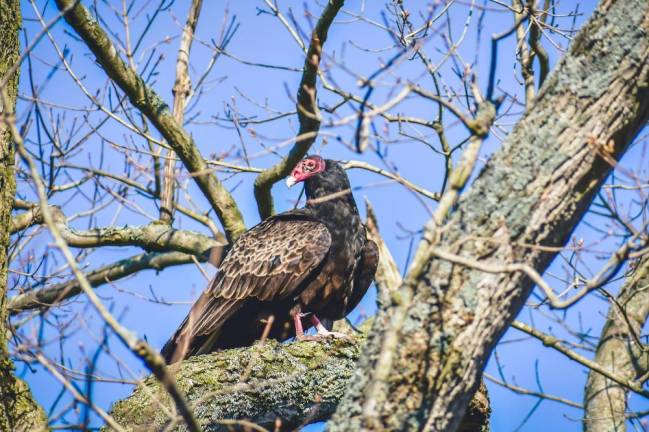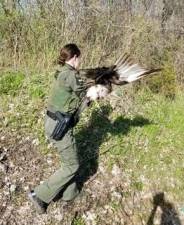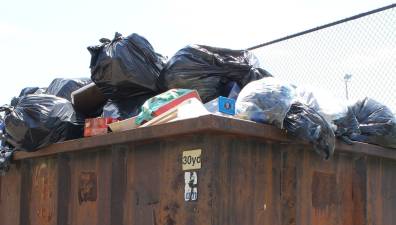More birds of a feather flocking together
Goshen. Vultures have shown up in the area, roosting in trees and on rooftops. Are they here in bigger numbers than in past years?


Vultures have shown up in Goshen, roosting in trees and on rooftops.
According to the Department of Environmental Conservation, vulture roosts - the locations where they congregate to roost communally at night - have become more common in the Hudson Valley over the past 40 years.
One reason: They are federally protected under law and killing or harming the bird, its eggs or nest can result in a $15,000 fine and six-months in jail.
Population growth
The DEC also noted that prior to the mid-1980s, black vultures weren’t in New York, but they have now expanded their area northward, which means the population is increasing.
Although it hasn’t been thoroughly researched, roosting areas are usually chosen because of proximity to food resources like abundant road-kill and residential and commercial trash containers. Those factors, the DEC noted, would make dumpsters and other unsecured garbage containers prime choices.
“Open dumpsters and garbage pails are an easy food source for vultures. Always secure dumpster and garbage lids,” Village of Goshen Police Chief James Watt said, adding that such food sources are appealing to bears in the spring as well.
Disease prevention
Vultures feed on carcasses of dead animals on the road or in the woods. Eliminating rotting meat helps stop the spread of disease-causing bacteria and parasites that might be passed on to humans.
Although vultures deal with the worst the earth has to offer (like rabies, Black Plague, botulism, distemper, and even anthrax), their highly acidic digestive system - which can even dissolve metal - keeps them from harm. Even their featherless heads and necks are assets, as they don’t become matted with blood while the bird tears into decaying flesh.
They’re so perfectly prepared for their job that vultures cleanse their legs by urinating on them after traipsing through contaminated flesh. The feces they pass also bacteria on the carcass. They’ll also vomit to unload their stomachs for a lighter, quicker getaway as gorging makes them very heavy.
Not predator-less
Although the can have wingspans of up to seven-feet, vultures do have predators. Among them are golden and bald eagles, great horned owls, red-tailed hawks, along with raccoons, opossums, and foxes as threats to their young as females do not make nests but instead lay one to three eggs at a time directly on the ground. Incubation is 38 to 41 days, and both parents help with care and feeding by emptying food directly into the hatchling’s mouth.
Now local to the area are the turkey vulture and the black vulture (which is relatively new to this region). The black vulture is smaller, but more aggressive and will kill small animals like dogs, cats, chickens, newborn lambs and calves, as well as incapacitated adult animals for food. The turkey vulture only consumes the decaying flesh of dead animals.
Both breeds have sharp eyes, but the turkey vulture is able to see and smell a decomposing body from a mile away. A group of vultures feasting on a decomposing body is actually called a wake.
Keeping them at bay
According to the DEC, the birds have been found to rip seat covers in boats and tractors and can also damage rubber seals around vehicle windows and rubber roofs. In agricultural settings, black vultures may even try to feed on young and/or incapacitated livestock.
Discourage them from roosting on your property by making loud noises, using horns, banging on anything metal, and waving your arms as you move toward them. Spraying them with a garden hose or hanging an owl or hawk decoy in nearby trees may also help.

